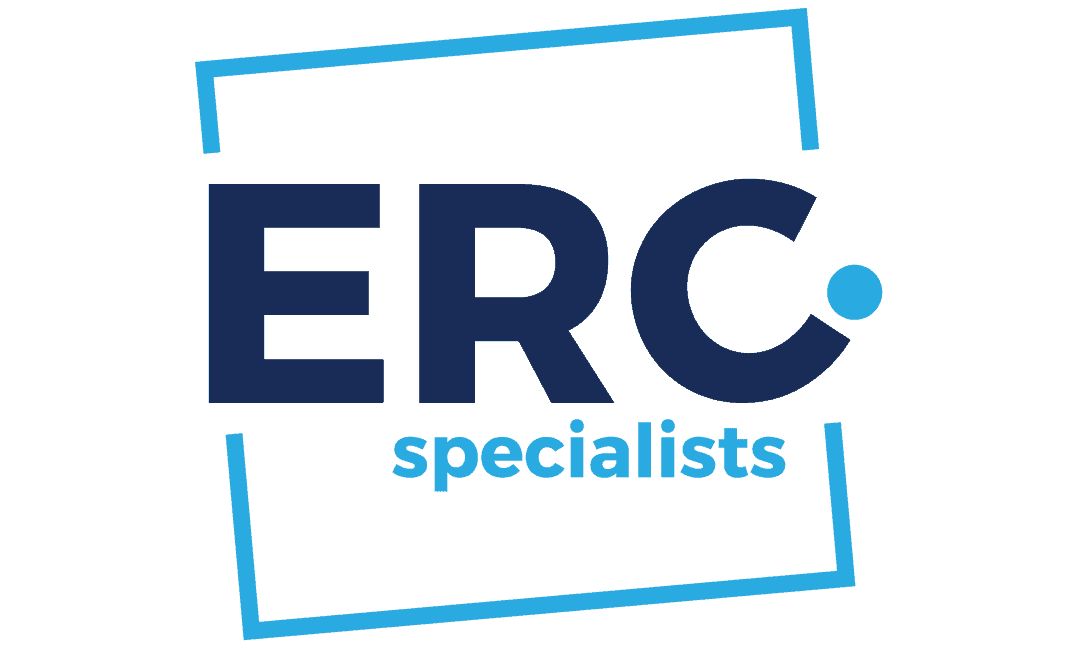Sometimes a one-page business plan is all you need to get a great idea going. Download our free one-page business plan template to get you started.
A one-page business plan can be the tool you need to secure funding opportunities, expand your business scope, or sharpen your focus and jumpstart your business success. Think of a business plan as a blueprint or roadmap for the success of your business. And when you limit your business plan to one single page, you can zero in on what will help you succeed.
Also, a formal business plan is often needed when seeking capital from traditional sources, such as a small business bank loan or a grant.
Don’t worry, because a successful business can rely on a business plan that’s just one single page — if you do it right. We’ll help you by walking you through the elements that make up a top-notch one-page business plan, and we’ll even give you a free downloadable template you can use to get started.
What Is A One-Page Business Plan?
A one-page business plan is a short document providing an overview of your current status and plans. Think of it as a big-picture overview driving your business decisions. Or, if you’re hoping to pitch your business plan to potential investors, a one-page business plan can give them a clean, quick outline of your goals and your strategies for getting there.
Your goals are big, and your plans for getting there are big, too. So, how the heck can you be expected to squeeze all of your energy and intentions into a single sheet of paper?
The answer is not to cheat by widening the page margins or by using a font so small you need a magnifying glass to read it. Stick to standard margins, use a normal, legible font, and follow our suggestions for creating a one-page business plan.
Do You Need A One-Page Business Plan?
Every business, no matter how big or small, needs to have a business plan, and a one-page plan is a great place to start. This plan should provide a basic overview of your business in its early stages. You can use it to guide your planning and decision-making or to pitch investors who might be willing to help you grow.
Key point: Many business owners can get started with a one-page business plan, although it may not be what you need as your business grows and becomes more complex. The good news is that even when your business eventually requires a longer, more complicated business plan, your one-page business plan can still prove useful! You’ll be able to return to your one-page plan to guide you as you create your next-level business plan.
Use A One-Page Business Plan If …
- You work on your own, as an independent contractor, freelancer, or simply someone managing a side hustle or hobby. If you’re ready to take it to the next level, a one-page business plan is a perfect document to guide you.
- You have a business idea to pitch to potential investors or partners. A one-page business plan can serve as an excellent and easy-to-digest introduction to your business.
- You plan to craft a lengthier business plan down the road. Because a one-page plan forces you to be concise, it can help you clearly convey your thoughts and cut out unnecessary jargon.
- You want to organize your thoughts or hone your focus to improve your business or tackle some problem areas.
Do Not Use A One-Page Business Plan If …
- You have a very complicated business idea.
- You have multiple partners.
- You’re seeking significant capital from a traditional source such as a bank, the Small Business Association, or a grant.
Executive Summary VS One-Page Business Plan
If you’ve been looking into creating a business plan, you’ve probably run across the term “executive summary.” And you may be wondering if an executive summary is the same thing as a one-page business plan.
It’s close, but not quite.
An executive summary is similar to a one-page business plan, but with key differences. Because a detailed business plan can run to dozens of pages, they often include an executive summary, which is a brief document providing key details from the business plan. An executive summary is usually written out in sentence form, rather than bullet points. And unlike a one-page business plan, an executive summary can be as much as two or three pages long.
Elements Of A One-Page Business Plan
If you’ve decided that a one-page business plan is the right tool for you to use, before you start to write it, let’s take a look at what a great one-page business plan needs to include.
Here are the seven basic elements of a one-page business plan:
- Business Overview
- Objectives
- Experience
- Target Market
- Your Competition
- Financial Summary
- Marketing Strategy
Now that you know a little more about what a one-page business plan is and when it’s the right tool for your business, you’re ready to start crafting your own! In the next section, we’ll walk you through 7 steps to help you create your one-page business plan.
How To Create A One-Page Business Plan In 7 Steps
You’re ready to create a one-page business plan! Before you start tapping away at your laptop, take a minute first to map out everything you need. You’ll find it much easier and faster to create your one-page business plan if you organize yourself first.
Remember the basic elements of a one-page business plan we covered earlier? Let’s break down each piece so you know exactly what to include. Your goal is to keep everything clear and concise, so you can fit all relevant information on a single page. A good rule of thumb is to keep each section to one or two sentences or a few bullet points.
Step 1: Create A Business Overview
In this section, state the business problem or market opportunity that you have identified. Then, give a brief description of how your business will solve that problem or meet that need. Answer this question succinctly: What product or service do you offer that will fill a need in the market?
Remember, you’re limited on space, so go directly to the point, using specifics and without being too generic. You want to make a statement that shows how your business stands out from the rest.
Step 2: Identify Your Objectives
For this section, home in on your goals for your business endeavor. Your objectives should be in the form of a list of the goals you have as you start or expand your business. What’s most important for you? Do you want to be your own boss? Do you want to provide outstanding service in an industry where service is lacking? Have you set a revenue goal?
Jot down your short-term and long-term goals for your business. Combine them, refigure them, and work on your list until you have no more than two or three clear, concise objectives that you can list in bullet form on your one-page business plan.
Step 3: Summarize Your Experience
Use this section to outline the specific qualities and experiences that contribute to making you a successful business owner uniquely poised to address the opportunities you’ve identified. Include your educational background, industry experience, work history, or even your own experiences as a customer that led to your business idea.
Having a resume on hand can make this section easier, so take the time to create or update yours. It’s also a good idea to have a resume ready if and when you formally seek funding in the future, as some lenders include this as part of their documentation requirements.
Step 4: Spotlight Your Target Market
Who will be your customers? What are their needs? Here are some questions to jumpstart your thinking:
- Will you market your products/services to consumers or to businesses?
- What is your key demographic? Consider factors including age, income, and lifestyle.
- Why do these customers need your product/service?
- Why should customers buy from you instead of from someone else?
Answering these questions may take some time, especially if you haven’t already considered these issues. Be prepared to do some research. Think about creating surveys, check out industry studies, and do your due diligence on comparable businesses.
While it’s true that serious market research costs money, for now, it’s okay to keep it simple. As your business grows and you develop a formal business plan, you can think about investing money in research. To create a one-page business plan, focus on free and low-cost methods for learning about your target market.
Step 5: Sketch Out Your Competition
Who will you be going up against in the marketplace? When you think about your competition, consider comparable products, services, and businesses that offer something similar to what you offer. Can you identify any competitive advantages they hold over you? And what advantages do you hold? Think about what you have to offer customers that would make them choose your business, product, or service.
For this section, you can use the market research from the previous section. Once again, it’s okay to keep it relatively simple and inexpensive here. As your business expands and you develop a more comprehensive business plan, you may need to invest money in additional market research.
Step 6: Provide A Financial Summary
It’s time to talk numbers! In your one-page business plan’s financial summary, you’ll need to include several important numbers. The first is your startup costs. If you haven’t launched your business yet, you may not have exact figures, but make sure to do some research so your estimates are as specific and realistic as possible.
Next, you will need to figure out ongoing costs to operate your business. This could include a lease or mortgage, marketing expenses, materials purchasing, hiring and training employees, payroll, insurance, and other expenses.
The last number you need to include is your projected revenue. After all, you want to show that you plan for your business to be profitable. What are you going to charge for your product or service? How many customers would you need to meet your revenue goals? You may already have an idea in mind, so just research comparable products or services to make sure your pricing remains low enough to be competitive but high enough to bring in a profit. If your business is currently in operation, you can review your bank statements and other financial documentation.
Step 7: Preview Your Marketing Strategy
You know how much revenue you need to be profitable. Now it’s time to think about how to gain that revenue as you plan out your marketing strategy. Remember, this is a one-page plan, so don’t list every detail. For now, though, you should keep a few things in mind.
The first is your budget. You can start with free and low-cost marketing methods, like free email marketing software, until you figure out what works. You can always upgrade to a paid plan when you need it.
Next, consider what your competitors or similar businesses within the industry are doing. In your eyes, which methods have been successful and which have flopped? Think outside of the box. While it’s certainly okay to do things your competitors are doing, such as advertising on social media, look for unique ideas that make you stand out.
Download Our One-Page Business Plan Template
One-page business plans rely on seven elements outlined above. But what’s the best way to organize your ideas? You want to make a compelling case, but you’ve got just one page to present it.
Never fear! We’ve got you covered with our free downloadable template.
Use our Merchant Maverick one-page business plan template to organize your ideas and capture your goals, plans, strategies, and more. It’s a great way to organize your thoughts and draft the professional-level one-page business plan you need to get started on your path toward business success.
For our PDF format, simply click on the link and print a copy for your records. For our Google Doc/MS Word format, when you click on the link, you will be asked to make a copy. Click “make a copy,” and then you will have your own editable one-page business plan in Google Docs.
Get Our One-Page Business Plan (PDF format)
Get Our One-Page Business Plan (Google Doc/MS Word)
How To Use Your One-Page Business Plan
Congratulations! You’ve created your one-page business plan. Now, it’s time to put it to use.
If you haven’t yet launched your business, your business plan can serve as a road map to get started. You have your goals in place, you’ve started to calculate your expenses, and you know how much money your business needs to become profitable and succeed. With your one-page business plan in hand, you’re ready to take the first step toward your goals and launch your business!
If your business is already established, your one-page business plan can help you when you’re ready to pitch your business idea to investors or partners.
And, by the way, if you’re already thinking about funding sources, you can add some real numbers to your one-page business plan. Start with our list of the best banks for small business loans.












